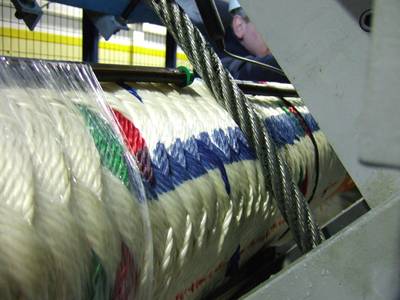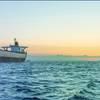Lankhorst Ropes Announces Cut-Resistant Jacket Research Project
Lankhorst Ropes Offshore Division is undertaking a research project into the development of cut resistant jackets for mooring ropes in the Norwegian and Barents Seas. The project will be used to assess materials needed to reduce the effects of fishing trawler lines on synthetic fiber mooring lines.
Deepwater moorings, beyond 800m, in the Norwegian and Barents Seas are subject to extreme weather and wave conditions. The synthetic mooring ropes must provide high abrasion resistance and be immune to the effects of external damage arising from trawler activities. In addition, the limited good weather windows in the area mean the ropes should be capable of being stored on the sea bed ahead of mooring deployment.
The cut-resistant jacket research involves simulating the effect of trawler wires coming into contact with synthetic fiber mooring lies, quantifying the damage and assessing the rope's residual strength after the event. It is part of a broader deepwater synthetic rope development program for moorings in the North Atlantic Ocean and Arctic, at Lankhorst Ropes Offshore Division's rope development and test facility in Portugal.
The Norwegian and Barents Seas are particularly challenging in the physical demands on the mooring rope, following what maybe many months of storage on the sea bed. The research will enable the company to work with operators and naval architects to devise the most effective mooring systems for floating production systems in this area, said Chris Johnson, sales director, Lankhorst Ropes Offshore Division.







